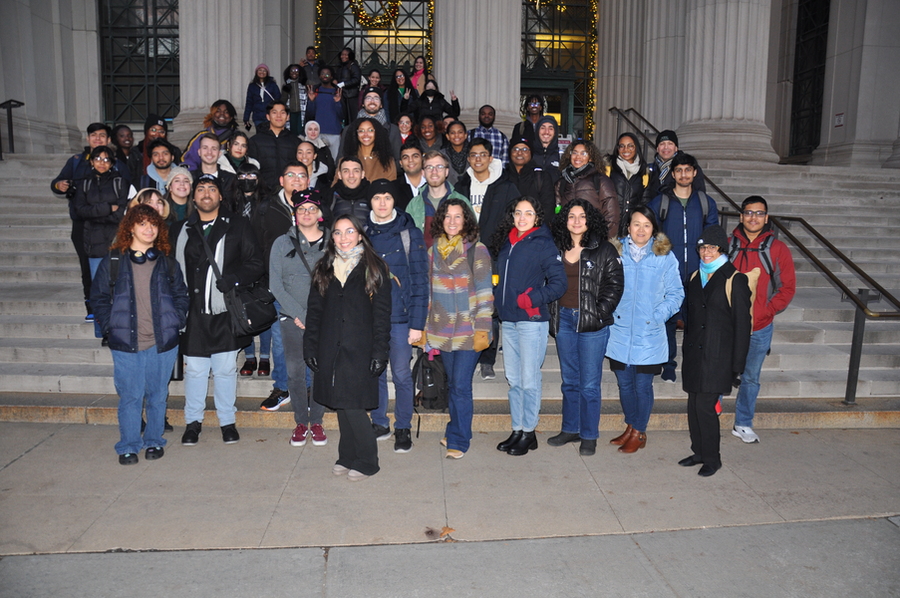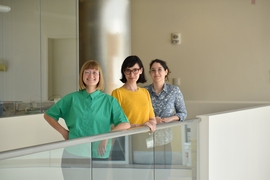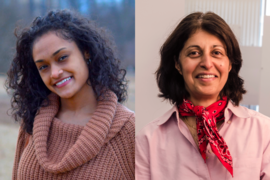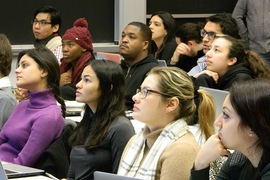Starting on New Year’s Day, when many people were still clinging to holiday revelry, scores of students and faculty members from about a dozen partner universities instead flipped open their laptops for MIT’s Quantitative Methods Workshop, a jam-packed, weeklong introduction to how computational and mathematical techniques can be applied to neuroscience and biology research. But don’t think of QMW as a “crash course.” Instead the program’s purpose is to help elevate each participant’s scientific outlook, both through the skills and concepts it imparts and the community it creates.
“It broadens their horizons, it shows them significant applications they've never thought of, and introduces them to people whom as researchers they will come to know and perhaps collaborate with one day,” says Susan L. Epstein, a Hunter College computer science professor and education coordinator of MIT’s Center for Brains, Minds, and Machines, which hosts the program with the departments of Biology and Brain and Cognitive Sciences and The Picower Institute for Learning and Memory. “It is a model of interdisciplinary scholarship.”
This year 83 undergraduates and faculty members from institutions that primarily serve groups underrepresented in STEM fields took part in the QMW, says organizer Mandana Sassanfar, senior lecturer and director of diversity and science outreach across the four hosting MIT entities. Since the workshop launched in 2010, it has engaged more than 1,000 participants, of whom more than 170 have gone on to participate in MIT Summer Research Programs (such as MSRP-BIO), and 39 have come to MIT for graduate school.
Individual goals, shared experience
Undergraduates and faculty in various STEM disciplines often come to QMW to gain an understanding of, or expand their expertise in, computational and mathematical data analysis. Computer science- and statistics-minded participants come to learn more about how such techniques can be applied in life sciences fields. In lectures; in hands-on labs where they used the computer programming language Python to process, analyze, and visualize data; and in less formal settings such as tours and lunches with MIT faculty, participants worked and learned together, and informed each other’s perspectives.
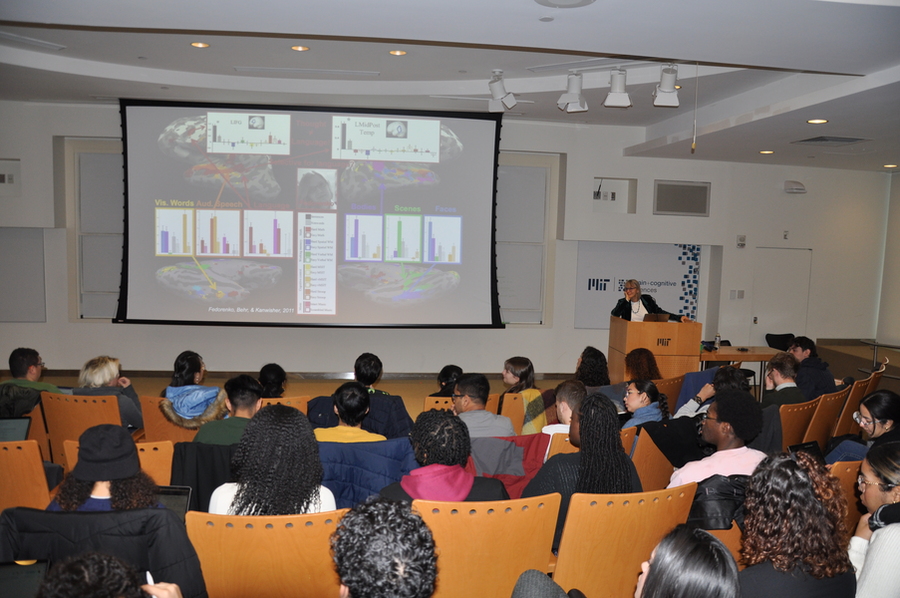
And regardless of their field of study, participants made connections with each other and with the MIT students and faculty who taught and spoke over the course of the week.
Hunter College computer science sophomore Vlad Vostrikov says that while he has already worked with machine learning and other programming concepts, he was interested to “branch out” by seeing how they are used to analyze scientific datasets. He also valued the chance to learn the experiences of the graduate students who teach QMW’s hands-on labs.
“This was a good way to explore computational biology and neuroscience,” Vostrikov says. “I also really enjoy hearing from the people who teach us. It’s interesting to hear where they come from and what they are doing.”
Jariatu Kargbo, a biology and chemistry sophomore at University of Maryland Baltimore County, says when she first learned of the QMW she wasn’t sure it was for her. It seemed very computation-focused. But her advisor Holly Willoughby encouraged Kargbo to attend to learn about how programming could be useful in future research — currently she is taking part in research on the retina at UMBC. More than that, Kargbo also realized it would be a good opportunity to make connections at MIT in advance of perhaps applying for MSRP this summer.
“I thought this would be a great way to meet up with faculty and see what the environment is like here because I’ve never been to MIT before,” Kargbo says. “It’s always good to meet other people in your field and grow your network.”
QMW is not just for students. It’s also for their professors, who said they can gain valuable professional education for their research and teaching.
Fayuan Wen, an assistant professor of biology at Howard University, is no stranger to computational biology, having performed big data genetic analyses of sickle cell disease (SCD). But she’s mostly worked with the R programming language and QMW’s focus is on Python. As she looks ahead to projects in which she wants analyze genomic data to help predict disease outcomes in SCD and HIV, she says a QMW session delivered by biology graduate student Hannah Jacobs was perfectly on point.
“This workshop has the skills I want to have,” Wen says.
Moreover, Wen says she is looking to start a machine-learning class in the Howard biology department and was inspired by some of the teaching materials she encountered at QMW — for example, online curriculum modules developed by Taylor Baum, an MIT graduate student in electrical engineering and computer science and Picower Institute labs, and Paloma Sánchez-Jáuregui, a coordinator who works with Sassanfar.
Tiziana Ligorio, a Hunter College computer science doctoral lecturer who together with Epstein teaches a deep machine-learning class at the City University of New York campus, felt similarly. Rather than require a bunch of prerequisites that might drive students away from the class, Ligorio was looking to QMW’s intense but introductory curriculum as a resource for designing a more inclusive way of getting students ready for the class.
Instructive interactions
Each day runs from 9 a.m. to 5 p.m., including morning and afternoon lectures and hands-on sessions. Class topics ranged from statistical data analysis and machine learning to brain-computer interfaces, brain imaging, signal processing of neural activity data, and cryogenic electron microscopy.
“This workshop could not happen without dedicated instructors — grad students, postdocs, and faculty — who volunteer to give lectures, design and teach hands-on computer labs, and meet with students during the very first week of January,” Saassanfar says.
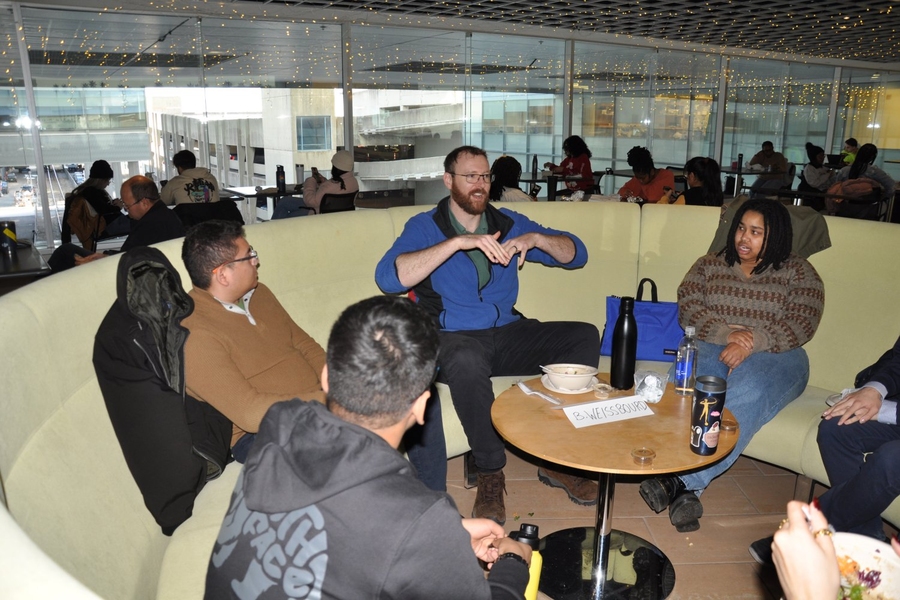
The sessions surround student lunches with MIT faculty members. For example, at midday Jan. 2, assistant professor of biology Brady Weissbourd, an investigator in the Picower Institute, sat down with seven students in one of Building 46’s curved sofas to field questions about his neuroscience research in jellyfish and how he uses quantitative techniques as part of that work. He also described what it’s like to be a professor, and other topics that came to the students’ minds.
Then the participants all crossed Vassar Street to Building 26’s Room 152, where they formed different but similarly sized groups for the hands-on lab “Machine learning applications to studying the brain,” taught by Baum. She guided the class through Python exercises she developed illustrating “supervised” and “unsupervised” forms of machine learning, including how the latter method can be used to discern what a person is seeing based on magnetic readings of brain activity.
As students worked through the exercises, tablemates helped each other by supplementing Baum’s instruction. Ligorio, Vostrikov, and Kayla Blincow, assistant professor of biology at the University of the Virgin Islands, for instance, all leapt to their feet to help at their tables.
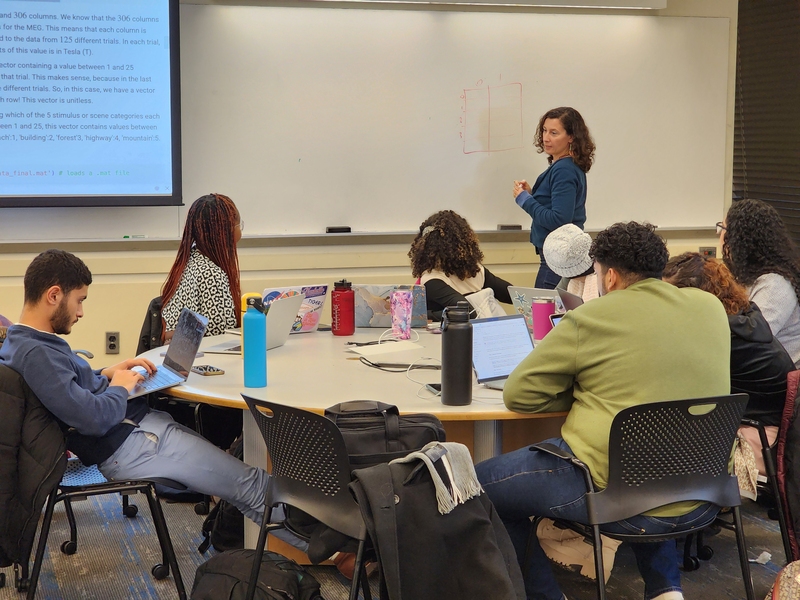
At the end of the class, when Baum asked students what they had learned, they offered a litany of new knowledge. Survey data that Sassanfar and Sánchez-Jáuregui use to anonymously track QMW outcomes, revealed many more such attestations of the value of the sessions. With a prompt asking how one might apply what they’ve learned, one respondent wrote: “Pursue a research career or endeavor in which I apply the concepts of computer science and neuroscience together.”
Enduring connections
While some new QMW attendees might only be able to speculate about how they’ll apply their new skills and relationships, Luis Miguel de Jesús Astacio could testify to how attending QMW as an undergraduate back in 2014 figured into a career where he is now a faculty member in physics at the University of Puerto Rico Rio Piedras Campus. After QMW, he returned to MIT that summer as a student in the lab of neuroscientist and Picower Professor Susumu Tonegawa. He came back again in 2016 to the lab of physicist and Francis Friedman Professor Mehran Kardar. What’s endured for the decade has been his connection to Sassanfar. So while he was once a student at QMW, this year he was back with a cohort of undergraduates as a faculty member.
Michael Aldarondo-Jeffries, director of academic advancement programs at the University of Central Florida, seconded the value of the networking that takes place at QMW. He has brought students for a decade, including four this year. What he’s observed is that as students come together in settings like QMW or UCF’s McNair program, which helps to prepare students for graduate school, they become inspired about a potential future as researchers.
“The thing that stands out is just the community that’s formed,” he says. “For many of the students, it's the first time that they're in a group that understands what they're moving toward. They don’t have to explain why they’re excited to read papers on a Friday night.”
Or why they are excited to spend a week including New Year’s Day at MIT learning how to apply quantitative methods to life sciences data.
